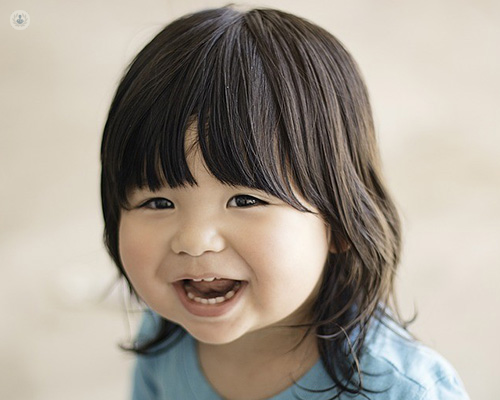5 signs of epilepsy to watch for in children
Written by:In the UK, an estimated 60,000 children are affected by epilepsy. Epilepsy can start at any age, from childhood to adulthood, but it can sometimes be difficult to know if symptoms point to epilepsy with young children, as they display somewhat differently with a wider range of symptoms to adult epilepsy. In this article we explain some of the ways childhood epilepsy can present itself, and what to be aware of.

Epilepsy is a neurological condition, meaning it affects the brain and the nervous system. The brain uses electrical signals to control functions in the body, including thoughts, feelings, and senses. When there is a disruption in the signal, or a sudden burst of electrical activity in the brain, this can cause a seizure. Seizures can present in different ways depending on the part of the brain affected.
Epilepsy is often thought of in relation to the generalised seizure, which affects the whole brain rather than a part, and causes involuntary jerking, often with a partial or total loss of consciousness.
Focal seizures, on the other hand, affect a particular part of the brain and seizures present differently, depending on the person experiencing them. Young children can present with a range of symptoms for focal seizures. The brain’s lobes (parietal, occipital, frontal, and temporal) are affected by focal seizures, and symptoms displayed depend on the area affected, including:
1. A feeling of Déjà vu
Epilepsy, when located in the temporal lobes of the brain, affects functions such as emotions, thoughts, feelings, and experiences. Seizures in the temporal lobes may present as a sense of experiencing something which has happened before. Other children may have the sensation that everything going on around them is strange or foreign. These experiences can vary in intensity and may last for only a few seconds, but they can last longer – up to several minutes. Sometimes the intensity may be so low that your child barely notices what is going on. In other cases the brain can cause other sensations like a strange taste in the mouth, or your child smelling something that isn’t there.
2. Absence seizures
Children are seemingly often lost in their own little world, looking into the distance and seemingly dead to the world going on around them – or they may have short attention spans and find it hard to focus. This is normal in children, but in some young children symptoms like this can be found in Childhood Absence Epilepsy. In CAE, your child may have ‘staring spells’ where they are unresponsive for short periods, usually around 10 seconds long. These spells come on abruptly and your child may not be aware of what is going on around them. Absence seizures vary from child to child, and can happen infrequently during the day, or up to 100 times a day. This may affect their concentration, how they do at school, and lead to generalised seizures later in life.
3. Hallucinations
Epilepsy can affect your child’s sight when it occurs in the occipital lobe, which can cause images to repeat before the eyes, flashing lights to appear, or colours and patterns. This type of focal epilepsy can also affect vision and cause partial blindness. Epilepsy in the occipital lobe can be difficult to diagnose, but it is important to note that this type of epilepsy is rare.
4. Odd sensations
The part of the brain which helps you to give meaning to its functions is the parietal lobe. This part of the brain helps you to process sensory information, such as taste, temperature and touch – these sensations are then processed by the parietal lobe, in a matter of seconds. Seizures occurring in this part of the brain cause sensory symptoms, such as a difficulty understanding words, or feelings of numbness, pressure, or electricity. Some children may feel like a part of their body is missing. These feelings may last from a few seconds up to a few minutes.
5. Laughter
Gelastic seizures cause your child to laugh, often in moments seeming out of place, or hysterically for no reason. Gelastic seizures can cause uncontrollable bouts of laughter, or sometimes cause crying. The term ‘gelastic’ comes from the Greek Word ‘gelos’, meaning laughter. This type of seizure is extremely rare, only affecting 1 in 1000 children who have epilepsy, and usually affecting boys more than girls.
If you feel that your child is exhibiting any of these symptoms, it’s usually nothing to worry about, but it is best to pay a visit to the doctor, or a specialist to check symptoms and get the right diagnosis. The UK has specialist epilepsy centres, dealing with child epilepsy, where a consultant can assess your child and perform tests to give the correct diagnosis.
The consultant may take blood, perform a scan called an MRI, and test electrical activity in your child’s brain by using an electroencephalogram (EEG). If your child does indeed have epilepsy, this should not be cause for concern. Nowadays epilepsy is a highly manageable condition and seizures can be controlled with anti-epileptic drugs. In many cases, children even grow out of their epilepsy and it does not stay with them in adulthood.


